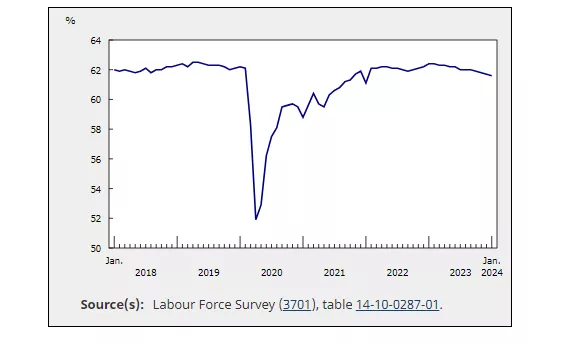Interpreting Canadian Job Numbers Is In The Eye Of The Beholder

Image Source: Pexels
The beauty in making sense of job numbers is that it is open to much interpretation. Is the glass half full or half empty, surely applies to Canadian data released today. Headline employment numbers reveal that total employment increased by 37,000, better than expected. But here is the rub: 12,000 full time jobs were lost, to be replaced by an increase of 49,000 part-time jobs. This is not the first time that the job market exhibited such a divergence between full-time and part-time workers. The net effect is that employment rate in Canada has not budged in over two years.
Jobs may be added, but so has the population growth. With population growth exceeding the increases in jobs, the overage employment ratio continues its recent decline, lowest since January 2022 when the pandemic shut down so many industries. The Canadian economy is barely holding its head above water in that job creation is being matched by population growth, resulting in no real change in the unemployment rate, at 5.7%
1. Employment Rate, Canada

Switching to more part-time work is a sign of a weakening economy. Part-time workers are often found in the lower wage sector where employers then avoid the need to provide paid benefits and, above all, can easily drop workers should business fall off. We have seen this kind of behaviour in the many of the lower-skilled occupations. Case in point is that employment in accommodation and food/beverage sectors suffered further declines.
The number of private sector employees rose by only 7K, and has increased by only 1.6% on a year-over-year. The boost in total employment came largely in response to a 4.2% increased in public sector jobs.
With so much attention given to the debate regarding when and how much the Bank of Canada should cut rates, the real focus should be how to re-vitalize a very weak economy. We are generating more part-time workers within the overall context of an economy that is expanding solely due population. This is not the kind of growth that should tolerate much longer without monetary stimulation.
More By This Author:
Why Did The Canadian Federal Government Deficit Increased Dramatically In 2023 And Does It MatterThe Great Debate In Canada On How Much Immigration Is Needed
What Happens If The Inflation Rate Never Gets Back To 2 Percent?



